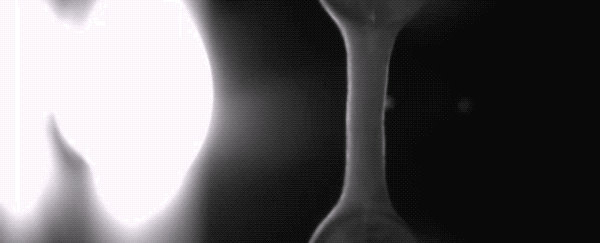If you have doubts about the progress scientists are making in growing tissue in the lab, check out this incredible artificial heart tissue that beats just like the real thing - it's both haunting and fascinating to watch.
The researchers grew the heart's atria – the upper chambers of the heart, which either pump blood into the ventricles or out to the rest of the body.
This artificial tissue can beat, express genes, and respond to drugs in a way that mimics a real human atrium, which means it could prove invaluable in developing treatments for related heart conditions such as atrial fibrillation.

This remarkable bit of lab engineering was based on human induced pluripotent stem cells or hiPCSs, which are stem cells generated directly from adult cells that can then be coached to develop into any other type of cell required.
"This is the first time that human atrial heart tissue has been generated in vitro from a principally unlimited source of hiPSCs," says one of the researchers, Marta Lemme from the University Medical Center Hamburg-Eppendorf in Germany.
"This could be useful both for academic laboratories and the pharmaceutical industry, because to test potential new drugs, we need to generate an in vitro model of atrial fibrillation. And the first step in that is to obtain cells that resemble human atrial cardiomyocytes."
Cardiomyocytes are the cells that make up the muscle of the heart or the cardiac muscle. What's special about these cardiomyocytes were they were developed to create 3D, beating heart tissue: that means properties allowing them to contract and relax, and to respond to drugs and electrical impulses.
The key was a vitamin A metabolite called all-trans retinoic acid, used to reprogram donor cells into a suitable, atrial-like form. Because the tissue matches the real heart so closely, it should be useful for everything from drug screening to disease analysis.
"A particular value of our study is the direct comparison of our 3D engineered heart tissue with native human atrial tissue obtained from patients on a molecular and functional level," says Lemme.
The main benefits of the research should be in the study of arrhythmia, or an irregular heartbeat. It comes in a variety of forms, but the most common is atrial fibrillation – that's where the heartbeat is often irregular and sometimes very fast, considerably higher than the usual upper limit of 100 beats when you're at rest.
It can lead to dizziness, shortness of breath, and tiredness, and is typically treated with drugs to control the heart rate or an operation called a catheter ablation that uses radiofrequency energy to destroy the part of the heart causing the abnormal rhythm.
But as realistic as this artificially grown human tissue looks when it's beating, the team behind the study thinks there's still plenty of room for improvement.
"These atrial muscle strips represent a great opportunity to model atrial fibrillation in the dish and test drugs," says Lemme. "Nevertheless, improvements can still be made to reach even higher similarity with the human atrial tissue."
"For us, the next step is to test various means to induce arrhythmias, study mechanisms of electrical remodeling of atrial fibrillation and test new potential drugs."
The research has been published in Stem Cell Reports.
